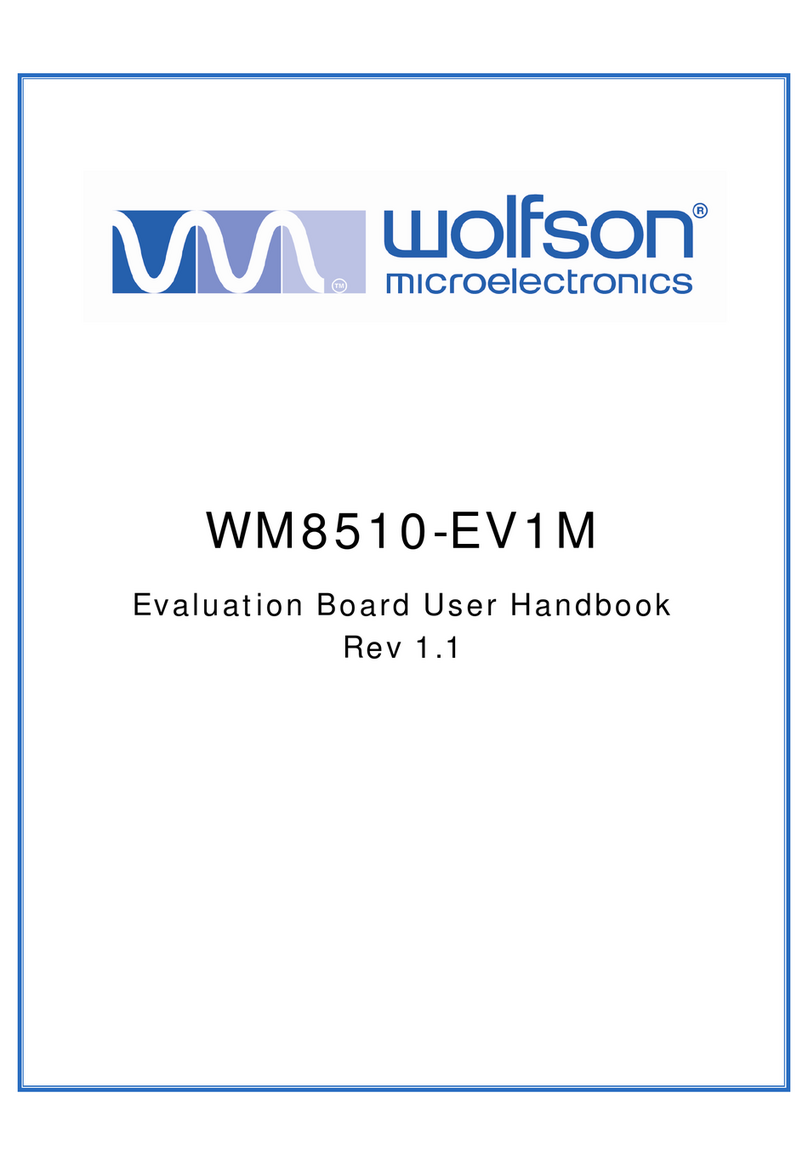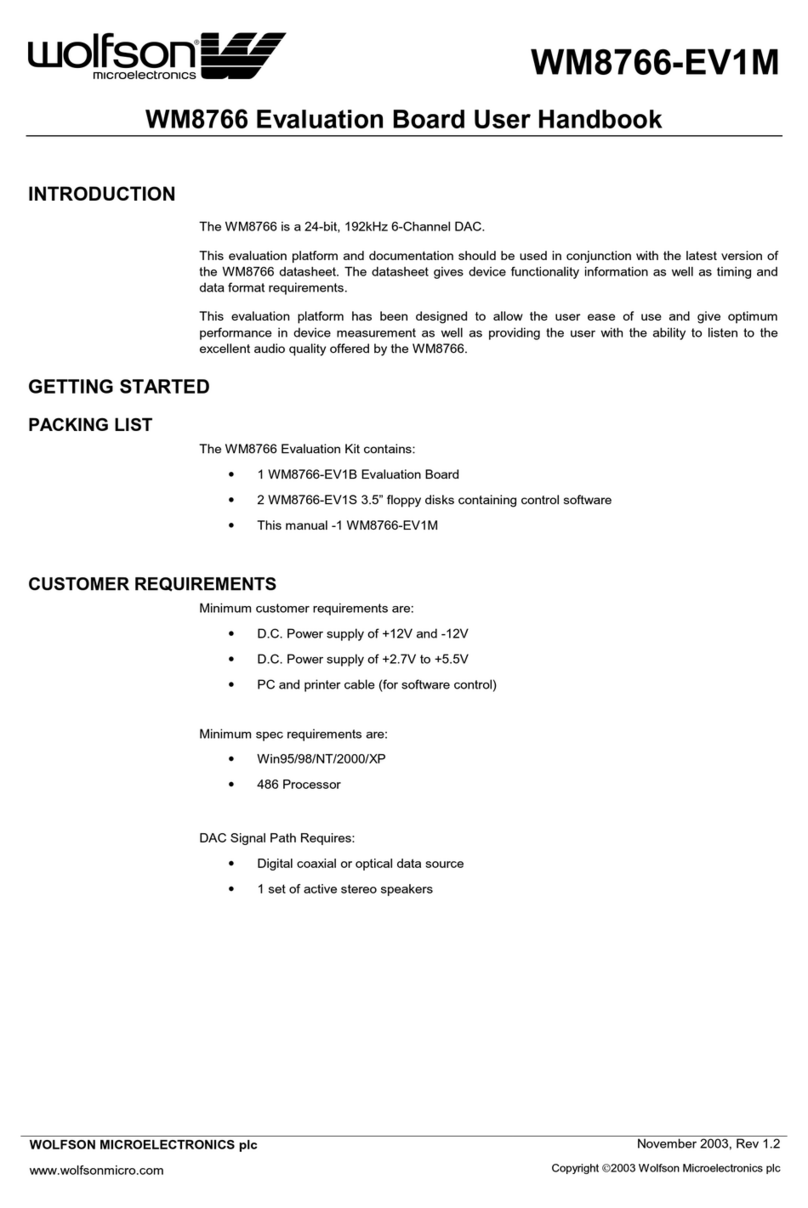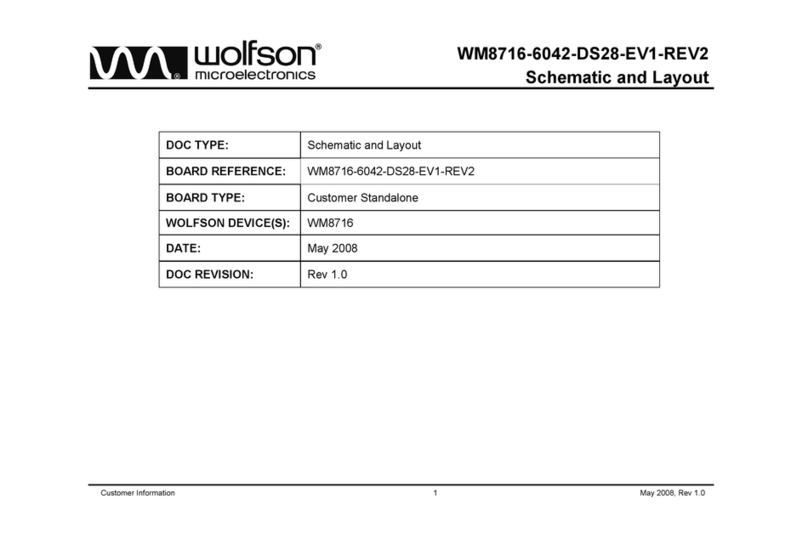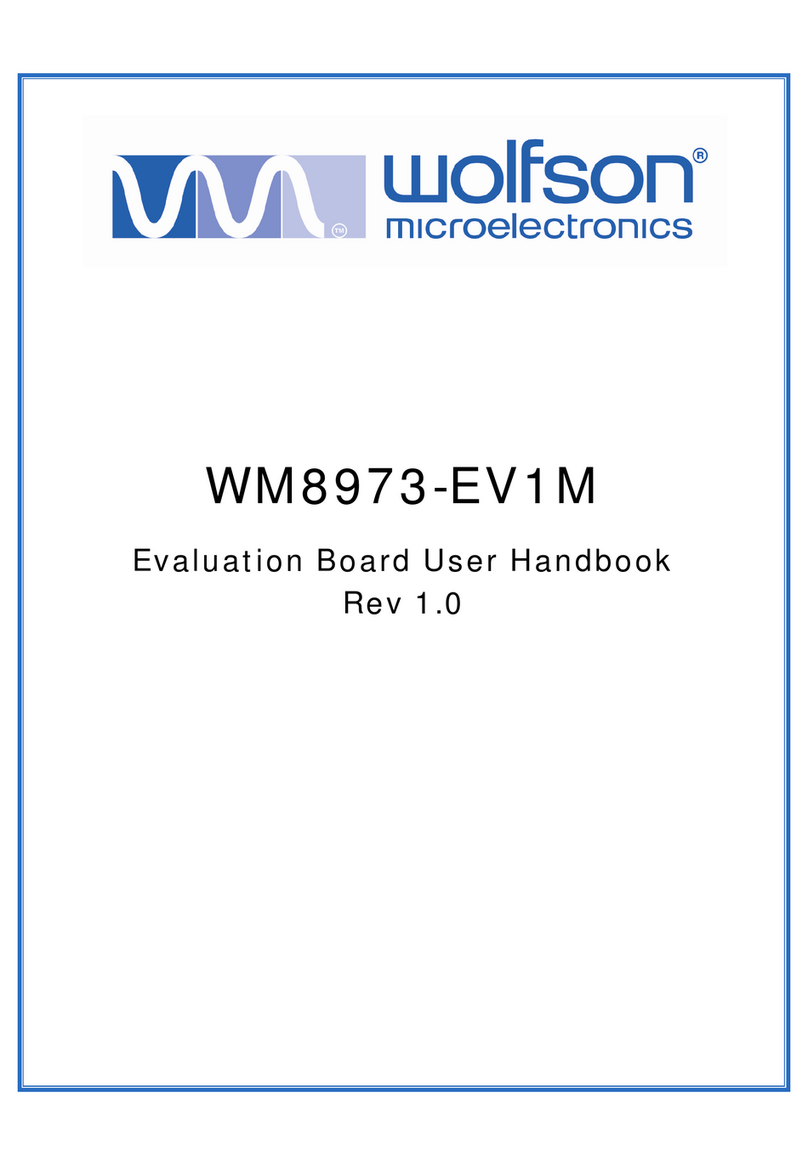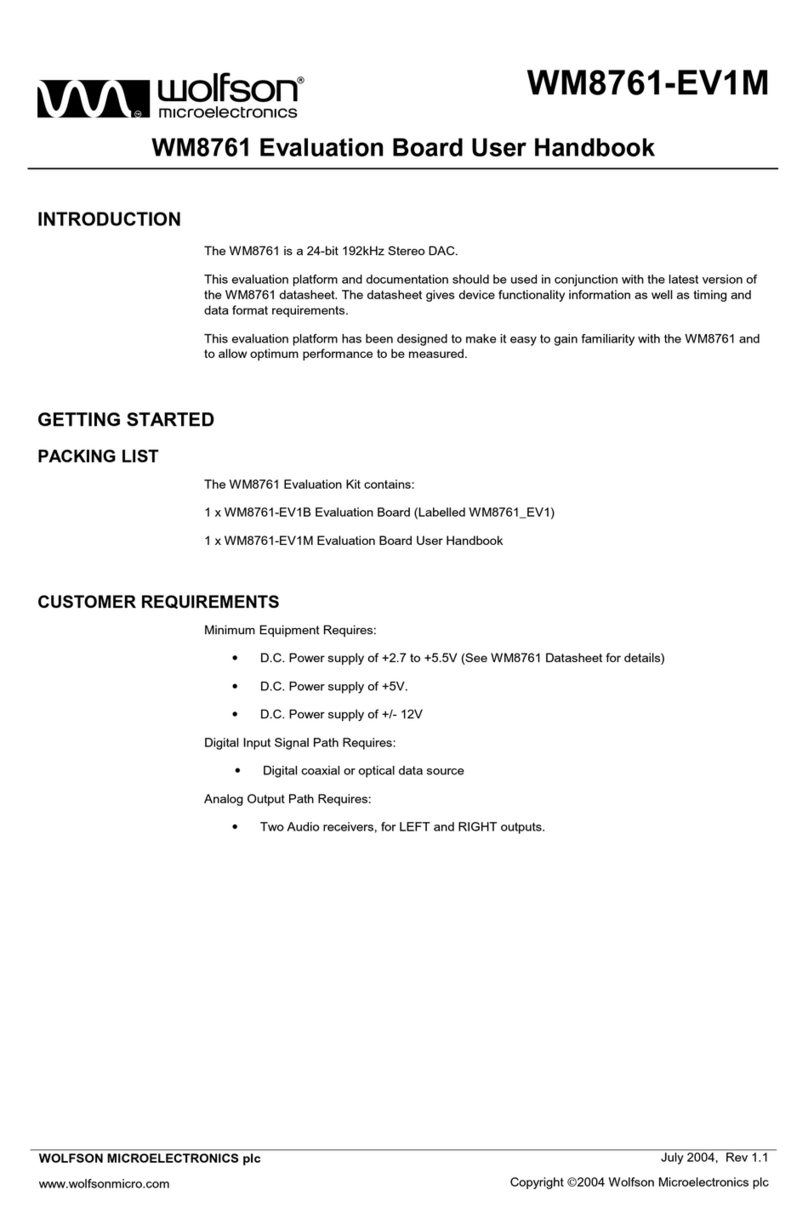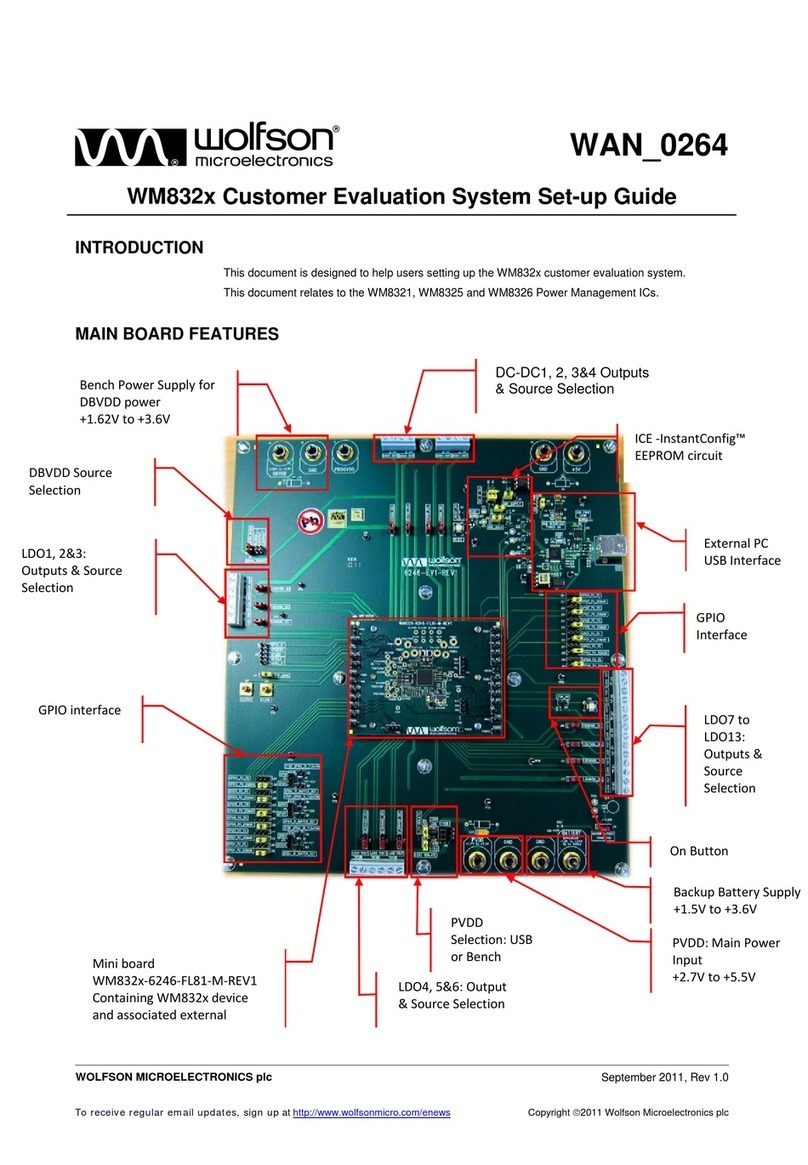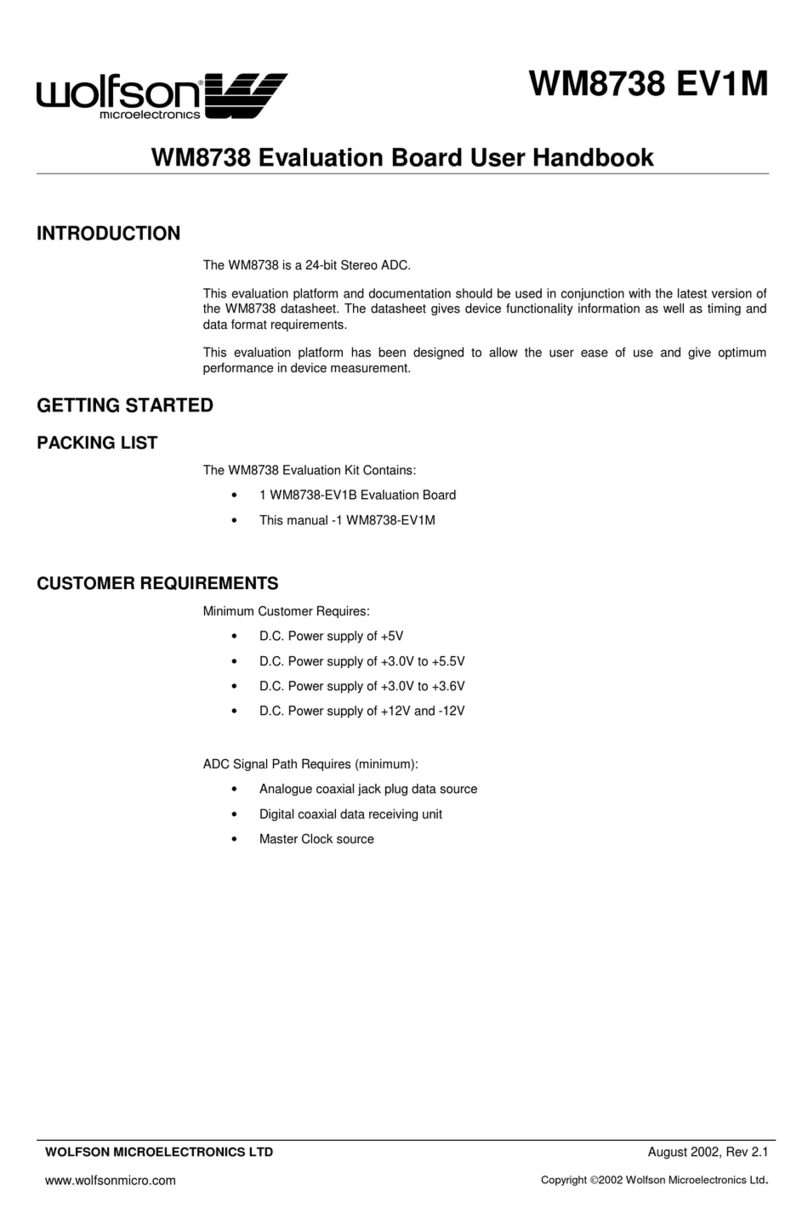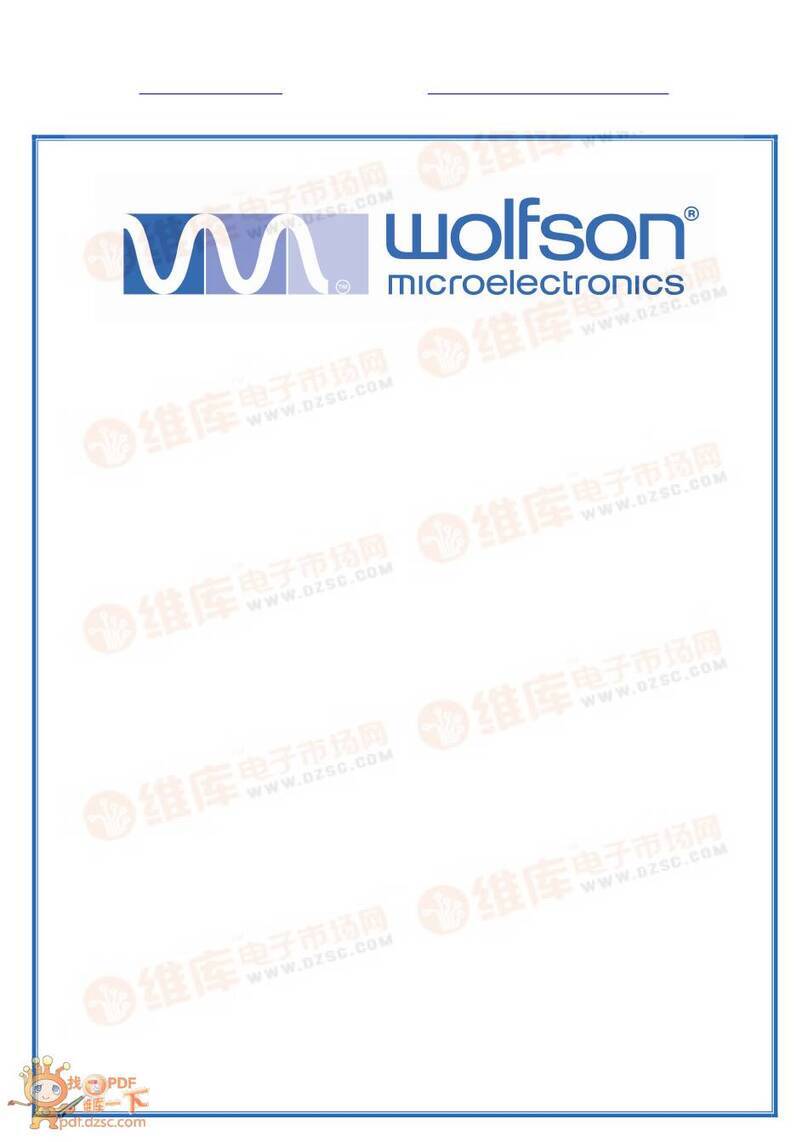
WM8778-EV1M
w Rev 1.1, February 2004
2
TABLE OF CONTENTS
INTRODUCTION ............................................................................................. 3
GETTING STARTED ....................................................................................... 3
EVALUATION KIT CHECKLIST ............................................................................. 3
CUSTOMER RE UIREMENTS..............................................................................3
EVALUATION BOARD OPERATION.............................................................. 4
POWER SUPPLIES ...............................................................................................4
BOARD FUNCTIONALITY ..................................................................................... 4
DIGITAL INPUT...................................................................................................... 5
ANALOGUE INPUT................................................................................................ 5
DIGITAL OUTPUT.................................................................................................. 5
ANALOGUE OUTPUT ............................................................................................ 5
INTERFACES......................................................................................................... 6
HEADERS .............................................................................................................. 6
JUMPERS .............................................................................................................. 7
SWITCHES ............................................................................................................ 8
LINKS..................................................................................................................... 8
HARDWARE CONTROL ................................................................................. 9
SOFTWARE CONTROL................................................................................ 11
SPI INTERFACE MODE....................................................................................... 11
TWO-WIRE MODE............................................................................................... 11
REGISTER MAP .................................................................................................. 12
SERIAL INTERFACE SOFTWARE DESCRIPTION...................................... 13
SOFTWARE DOWNLOAD................................................................................... 13
SOFTWARE INSTALLATION............................................................................... 13
SOFTWARE OPERATION ................................................................................... 14
DAC SETUP......................................................................................................... 19
ADC SETUP......................................................................................................... 21
LINE SETUP ........................................................................................................ 23
SCHEMATIC LAYOUT .................................................................................. 2
WM8778-EV1B PCB LAYOUT...................................................................... 33
WM8778-EV1B BILL OF MATERIAL............................................................ 37
APPENDIX .................................................................................................... 39
DAC AND ADC ALTERNATIVE AUDIO INTERFACE CONFIGURATION............ 39
EXTERNAL DSP CONNECTION TO THE WM8778-EV1B.................................. 41
ADDITIONAL WM8778-EV1B SETUP RECOMMENDATIONS ............................ 45
EVALUATION SUPPORT ............................................................................. 47
IMPORTANT NOTICE ................................................................................... 48
